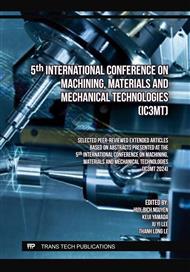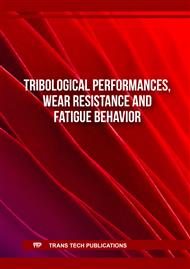p.29
p.39
p.45
p.53
p.61
p.69
p.75
p.83
p.93
Fundamental Study on Influence of Residual Stress Distribution on Fatigue Strength in ns Pulsed Laser Peening for Welded High-Strength Steel
Abstract:
Due to the recent increase in energy consumption, global environmental issues have attracted attentions in order to continue the sustainable development of society [1]. Currently, scrap-and-build becomes a mainstream in the field of constructions, which would use and /or dispose a large amount of materials. This situation results in massive energy consumption with a significant environmental impact [2]. Therefore, it is important to consider sustainable systems in the construction industry. In many countries, a lot of structures had been constructed during the period of rapid economic growth in the middle of the last century, and their constructions are reaching the end of their design lives. In particular, due to the significant increase in the number of automobiles, numerous cracks above the estimated numbers has been observed in the bridges of motorways. Therefore, the improvement of fatigue life is strongly required to keep a good condition of constructions for a long time. In addition, the nuclear power plant is one of important infrastructures in the modern society, and the proper maintenance of nuclear reactor has been required to ensure their safety after the accident at the Fukushima Daiichi Nuclear Power Plant caused by the Great East Japan Earthquake. Stress corrosion cracking is considered as the most important damage event in the maintenance of nuclear reactor. Stress corrosion cracking occurs, when three factors are combined: tensile residual stress due to welding, material sensitization in the heat-affected zone, and the corrosive environment. In other words, eliminating one of these factors might prevent from generating stress corrosion cracks, and it is expected to extend the fatigue life of nuclear reactors [3]. Therefore, shot peening has been conventionally used as a method to reduce fatigue cracks, because the compressive residual stress can be obtained by the surface’s deformation generated by the high-speed impact of shot grain. However, quantitative control of residual stress is not easy in the shot peening process. Because the shot peening treatment involves the combinations of many factors in the collision between shot grains and the specimen’s characteristics, and the mechanism of micro-structural transformation is also important point to consider the process’s effect. In addition, shot grains possibly remains on the specimen surface, and the contamination of shot grains might deteriorate the functionality of metal surface [4].
Info:
Periodical:
Pages:
61-68
Citation:
Online since:
March 2025
Authors:
Price:
Сopyright:
© 2025 Trans Tech Publications Ltd. All Rights Reserved
Share:
Citation:



